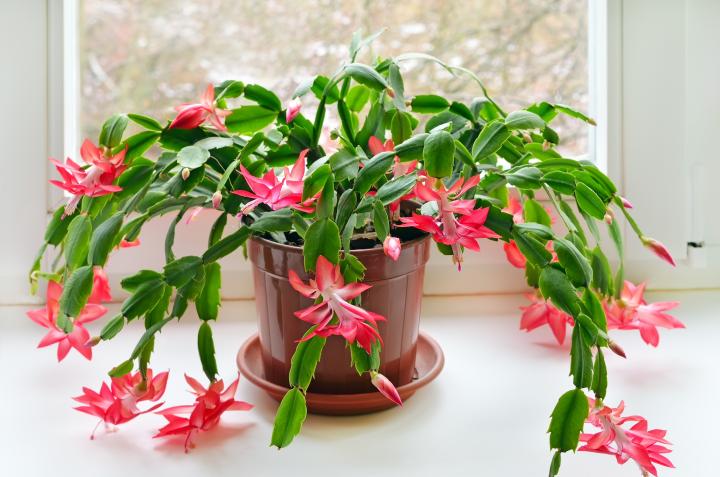By Justin Miller
Special to the Opelika Observer
Move over poinsettias, holiday cacti are making a name for themselves as the plants of the holidays. Quickly becoming more and more popular, both Thanksgiving and Christmas cacti put on quite a show during this time of year.
Thanksgiving v. Christmas
Sallie Lee, an Alabama Extension home grounds regional agent, said because they are closely related, it is often hard to tell the difference between Thanksgiving and Christmas cacti.
“Many people often ask why their Christmas cactus is blooming in November and often is it because it’s a Thanksgiving, not Christmas, cactus,” Lee said.
These plants have many similarities. Both plant bodies are flat, and the leaves are stems. When it comes to color, the old-fashioned, fuchsia-colored blooms are the most common in both plants. However, new hybrids have white, red, yellow, salmon and even purple colored blooms.
There are a few, distinct differences between these two plants. Lee said people can identify the cacti by looking at the shape of the leaves and the direction of the bloom.
“Thanksgiving cacti have sharply serrated or toothed leaves, while Christmas cacti have rounded leaves,” Lee said. “Another way to identify which one you have is by looking at the blooms. If they push upward, it’s a Thanksgiving cactus and if they hang down, it’s a Christmas cactus.”
Plant Care
These cacti are native to the tropical forests of South America. However, they grow well in Alabama. Because they can grow quite large, people must plant them in sturdy hanging baskets or containers. They can survive outdoors away from artificial light until nighttime temperatures dip into the 40s. At that point, people should bring them inside to a cool area.
According to Lee, these cacti grow best in temperatures between 50 and 65 degrees Fahrenheit.
“Once inside, to help initiate blooming, keep them away from light from 5 p.m. until 8 a.m.,” she said. “Water sparingly, as too much water can cause bud drop and even root rot. Let the top inch of soil become dry to the touch before watering again.”
Cacti grow best in 50 to 60% humidity. If the room is dry, fill a waterproof saucer with gravel and add water halfway full. Then, place the pot on the gravel surface.
When flower buds drop before they bloom, it is usually because of overwatering, lack of humidity or insufficient light. Regardless of the type of holiday cactus, avoid high temperatures and heat fluctuations when the plant is flowering.
Easily Propagated
Some varieties of these cacti have been in families for 50 years because they are so easily propagated. To propagate, people need:
- small container of moist potting soil
- Thanksgiving or Christmas cactus to provide a cutting or cuttings
- rooting hormone (this is helpful but not mandatory)
First, clip a three or four segment piece of the plant off and dip the cut end in the rooting hormone. Then, push the cut end about an inch or so into the container of soil. Make sure the soil stays moist. Place a transparent plastic bag over the cutting without touching the cactus. To do this, insert a popsicle stick in the container about an inch or so deep then drape the plastic bag over it. These rooted, growing cuttings make great gifts for friends and family gardeners during the holidays.
More Information
For more information about Thanksgiving or Christmas cacti, visit www.aces.edu or contact your county extension home grounds agent.

